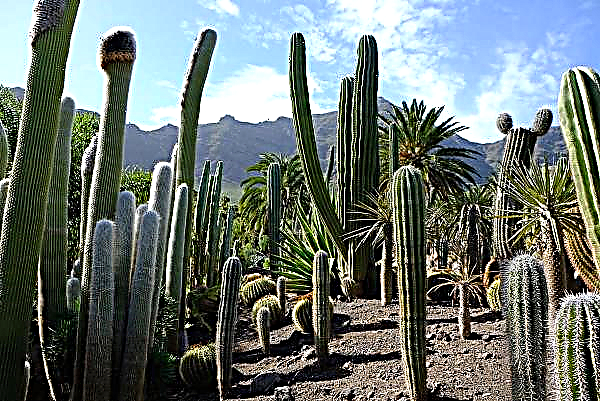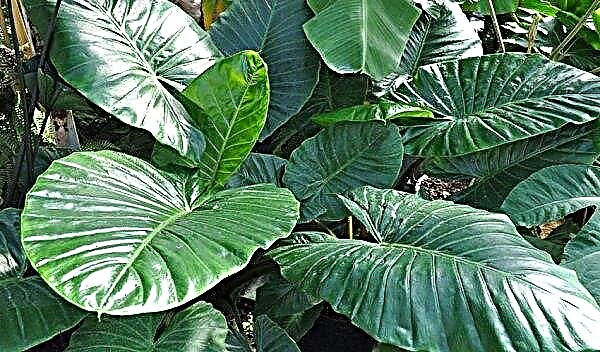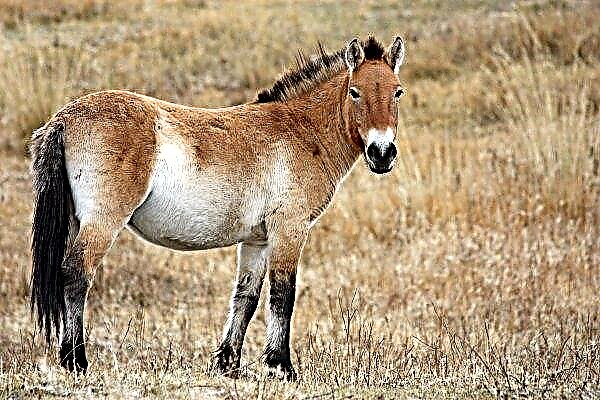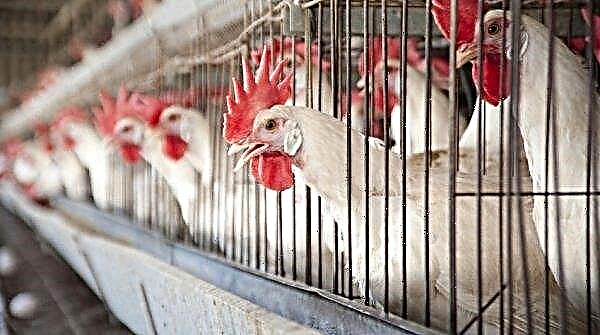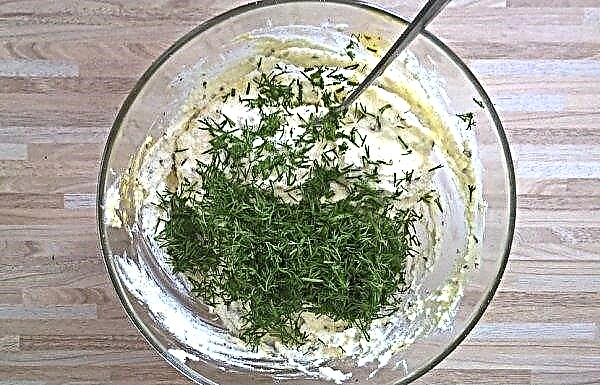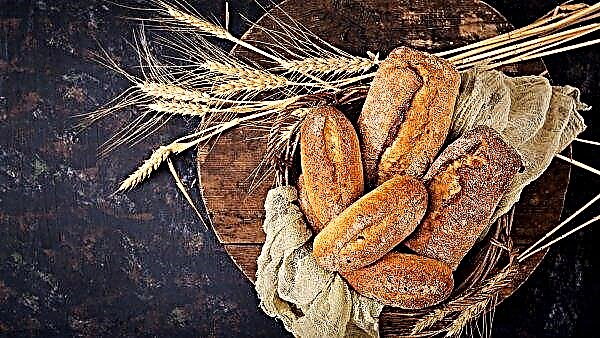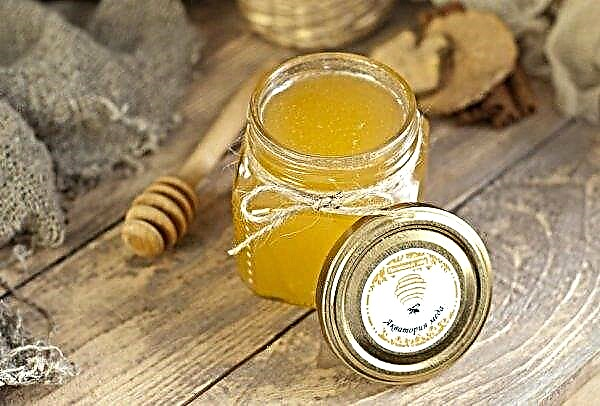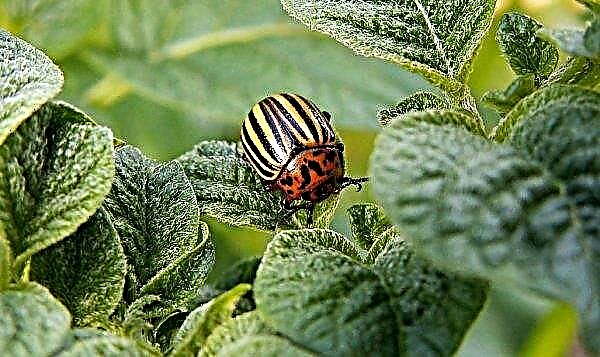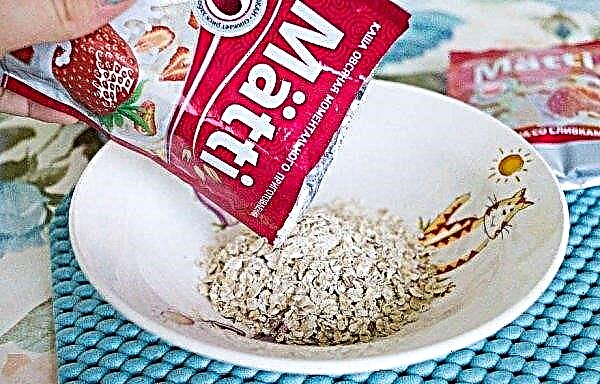Ceropegia is a tropical flowering plant that grows in Africa and Asia. It conquered flower growers with its flowers of unusual and diverse forms. To successfully grow this flower, you need to know some of its features, which will be discussed later.
Botanical description of the plant
Ceropegia is the owner of a creeping, sometimes erect stem covered with shiny dark green skin. At home, it reaches a length of one meter, but in nature it can grow up to three to five meters. In a year, the stem can grow by 45 cm.
Leaves emerge from opposite internodes, the interval between the pairs of which is about 20 cm. Petioles are short in foliage, not more than one centimeter.
Leaf plate ovoid or heart-shaped, fleshy to the touch. It is painted in dark green color. Some varieties have a marble color of foliage. The leaf is 6 cm long and 4 cm wide. Usually its lower side is lighter than the upper, and the central vein is well defined on it.
Single flowers appear in the sinuses. This process can continue year round. They are funnel-shaped, white or greenish in shape. Corolla tubular and fused with bract. Its inner side has a slight pinkish tint. Flowers exude a pleasant, delicate aroma.
Did you know? The Latin name for ceropegia, сeropegia, comes from the ancient Greek κηροπήγιος, which means «chandelier». Most flowers of ceropegia look exactly on him.
After the flower withers, the peduncle does not disappear. More than once new buds will appear on it. Over time, this process will form an internode and become similar to a side shoot.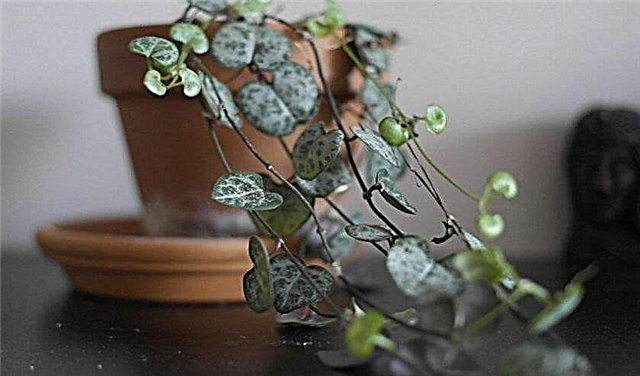
| Root system | fusiform or tuber |
| Stem | erect or creeping |
| Leaf shape | ovoid, heart-shaped |
| Leaf color | dark green |
| Flower shape | funnel-shaped |
| Flower color | white, greenish |
| Fruit shape | linear, cylindrical, fusiform leaflet |
Main types
The genus of ceropegia is extensive. It has 217 species.
Here are some of them, most often grown as indoor flowers:
- Voodoo. The owner of thin stems with green-brown skin. Dark green leaves of small sizes 1.5–2 cm. Their color is uneven, in some places spots of a darker color are visible. Light brown balls appear on the stem in summer, from which lateral processes and aerial roots grow. The flowers are white or pink with dark brown petals.
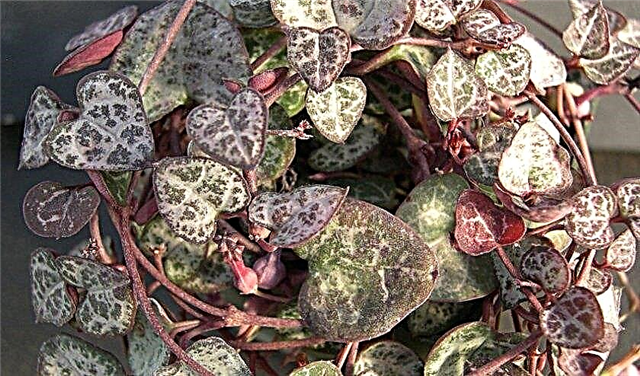
- Africana. It has a fleshy drooping stem, in the internodes of which dense ovoid leaves grow. Their size is small, only 1 cm in length and in width. The flowers are also small, have a green-purple color.
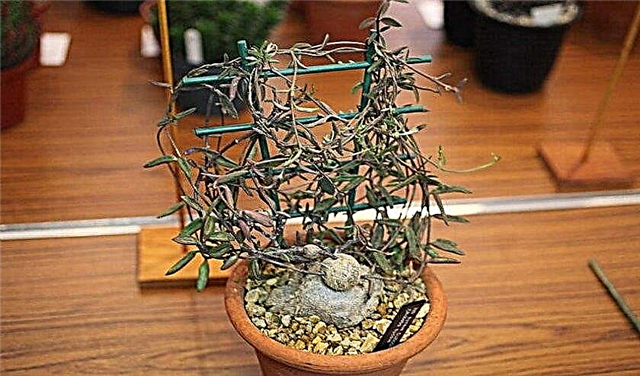
- Sanderson. Among all, it stands out with a saturated dark green stem and fleshy leaves of a heart-shaped form. The flowers are large, up to 7 cm in length. Above the flower tube is a lime umbrella, formed by fused petals.
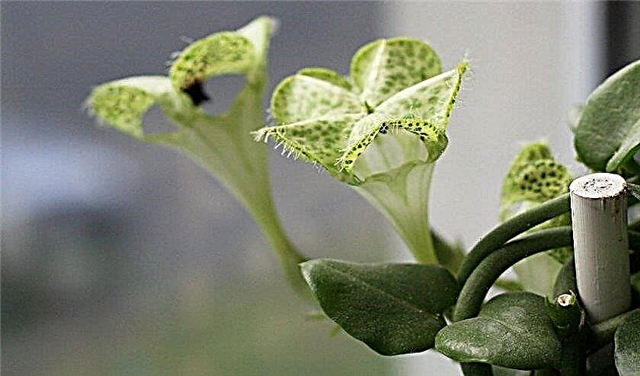
- Barclay. It has a liana-shaped pinkish-greenish stem with spherical tubers and with a rare heart-shaped foliage of silver-green color. Its size is small - 2.5-5 cm in length. The funnel-shaped flowers have a wide open upper edge. Above it is a dome. The outer side of the funnel is painted green-pink, and the inside is purple.
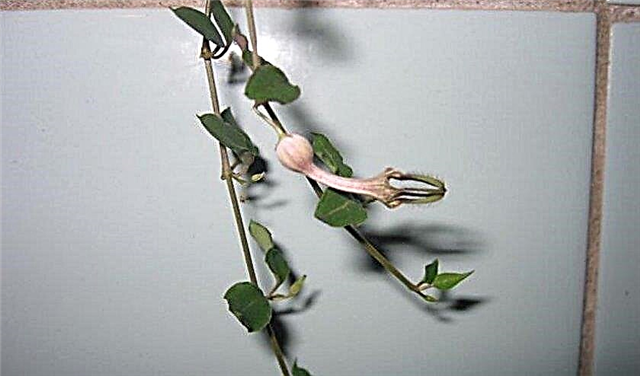
Conditions for successful growing at home
Ceropegia is not a capricious plant and does not need special conditions, but you still need to take care of it so that the flower grows normally.
Lighting
Since ceropegia has a creeping stem, it needs a hanging planter. In it, you need to hang it as high as possible on windows with intense sunlight. It is best that it be a southern window, but it must be shaded, so that direct sunlight does not damage the leaves of the flower and does not delay the beginning of the flowering period.
Important! If the flower lacks light, then its few foliage will become even rarer, starting to crumble.
Ventilation
The plant is very fond of fresh air. In winter, the room where it grows needs to be ventilated regularly, and in the summer, the flower can be taken outside.
Temperature
In the summer, a temperature of +20 ... + 25 ° C is suitable for ceropegia. With the advent of autumn, it needs to be gradually reduced so that in winter it is at the level of +14 ... + 16 ° С. The fall of the thermometer column below the + 11 ° C mark is detrimental to the plant.
Air humidity
This is not the most important moment in the conditions of flower maintenance, since its growth and development does not significantly affect air humidity. It is only necessary to spray the plant in order to remove accumulated dust from the leaves.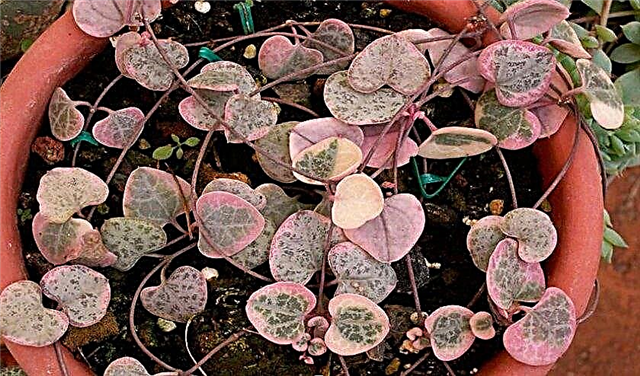
Home Care
To care, as well as to living conditions, ceropegia is not demanding.
Watering
Watering the flower should be plentiful, but only when the soil in the pot dries to 1/3 of the depth. Water should be soft and not cold. With the advent of cold weather, the interval between irrigation increases.
Top dressing
During the growing season, it is desirable to feed the plant. For these purposes, you can use mineral complexes designed for succulents. They are used twice a month along with watering.
Important! Nitrogen fertilizers should be avoided, as they can do more harm than help.
Pruning
The flower itself does not need pruning. If desired, you can shorten those shoots that interfere, but you do not need to give a special shape to the flower. Sometimes sanitary pruning may be necessary (removal of patients, damaged shoots and leaves).
Transfer
In the spring, every two to three years, it is advisable to transplant the ceropegy. This is done by transshipment so as not to injure the sensitive root system and shoots.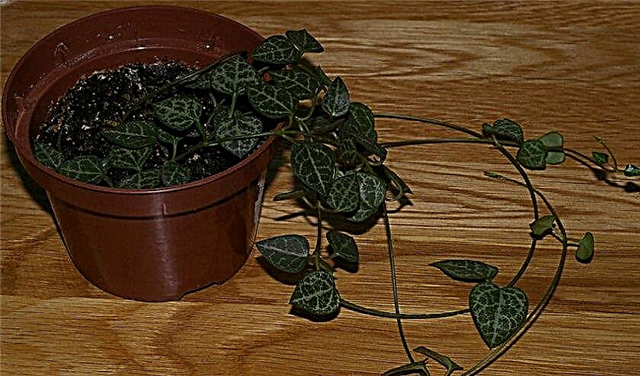 The process begins with the preparation of the pot. It should be a wide, but not deep pot, a size larger than the previous one. It is filled with drainage and a mixture of leaf, sod land, humus, sand with the addition of a small amount of charcoal and pine bark.
The process begins with the preparation of the pot. It should be a wide, but not deep pot, a size larger than the previous one. It is filled with drainage and a mixture of leaf, sod land, humus, sand with the addition of a small amount of charcoal and pine bark.
The flower extracted from the pot is carefully placed in a new container and sprinkled with earth. If suddenly in the process of transplanting the stems tangled up, then unraveling them is not desirable. You can do it a little later. During the week, a volume of water that is half as much as usual is used to irrigate the transplanted plant.
Breeding
The plant propagates by seeds, dividing the bush and cuttings.
Dividing the bush
During the transplantation of an adult flower, you can carry out the procedure of its propagation by dividing the bush. The root system of the plant with a sharp knife is cut into 2-3 parts. Each part should have several tubers and buds. Parts of the flower are planted in pots, and they are looked after as an adult plant.
Cuttings
In spring, cuttings with 2–3 internodes can be cut from the tops of the stems. For their rooting, moist nutrient soil is used. If you manage to cut the stem with an air tuber, then the chances of a positive success increase significantly.
Planted cuttings are covered with a film and kept at a temperature of +18 ... + 20 ° С in a bright place. They are regularly watered and ventilated. New root shoots will testify to rooting. This will be a signal to transplant the plant to a permanent place.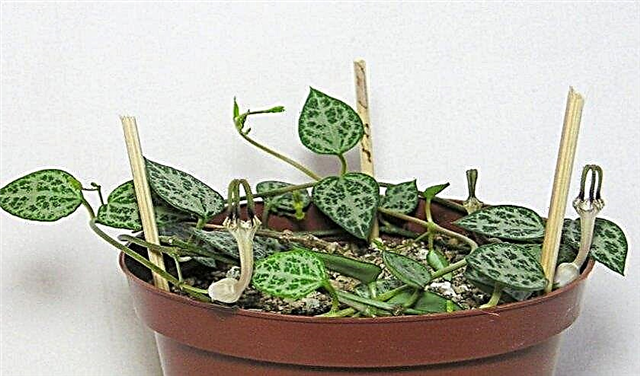
Seeds
Reproduction by seeds is a troublesome task. They can be purchased at any flower shop. For planting, you should prepare a box filled with a mixture of peat and sand. Seed is laid out on the surface of the substrate and sprinkled with a thin layer of soil.
The container is covered with a film and put away in a warm bright place with a temperature of +20 ... + 25 ° С. The appearance of seedlings usually takes 14-18 days. When the seedlings get stronger, they are dived into individual flowerpots.
Did you know? The genus ceropegia with its only species was described in 1753 by Carl Linnaeus, who gave the name to the genus.
Possible growing difficulties
Diseases and pests rarely attack a plant. Among all kinds of diseases, various rot usually occur due to improper care. They can be easily dealt with by normalizing watering and temperature conditions, and if necessary, a flower transplant is also carried out.
Of the pests most often found:
- Spider mite. He usually lives on the back of the sheet, covering it with the finest cobwebs. Appears due to fever and dry air. You can cope with it with the help of infusion onion peel (20 g per liter of boiling water). Processing should be carried out three times with an interval of one and a half weeks.
- Aphid. She usually switches to ceropegia from other indoor plants. Because of it, young shoots begin to deform, the whole plant is covered with a sticky substance. You can overcome it with the help of tobacco broth (0.5 kg of waste shag on 2 liters of water, insist for a day). The finished broth is diluted with water (2 tbsp. L. Per liter) and treated with a flower.
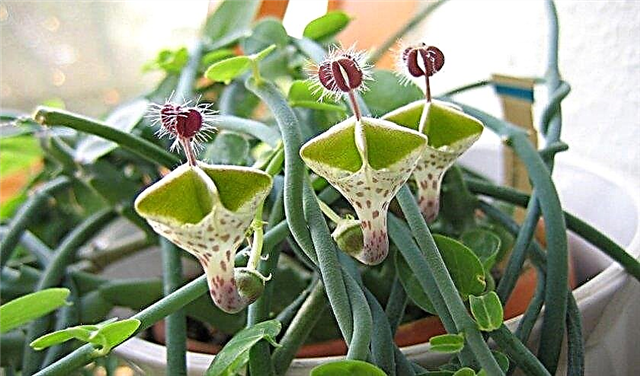 There are other problems that the grower may encounter:
There are other problems that the grower may encounter:- thinning of stems, the appearance of small leaves (lack of light);
- flowering does not occur (lack of nutrients and light);
- yellow leaves and their loss (low temperature, waterlogging of the soil).
Ceropegia is an unpretentious flower. If you take care of it correctly, then the plant is not afraid of pests and diseases. You will only enjoy a beautiful and long flowering plant.





